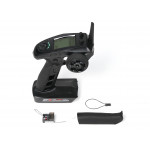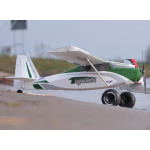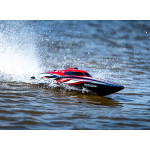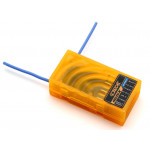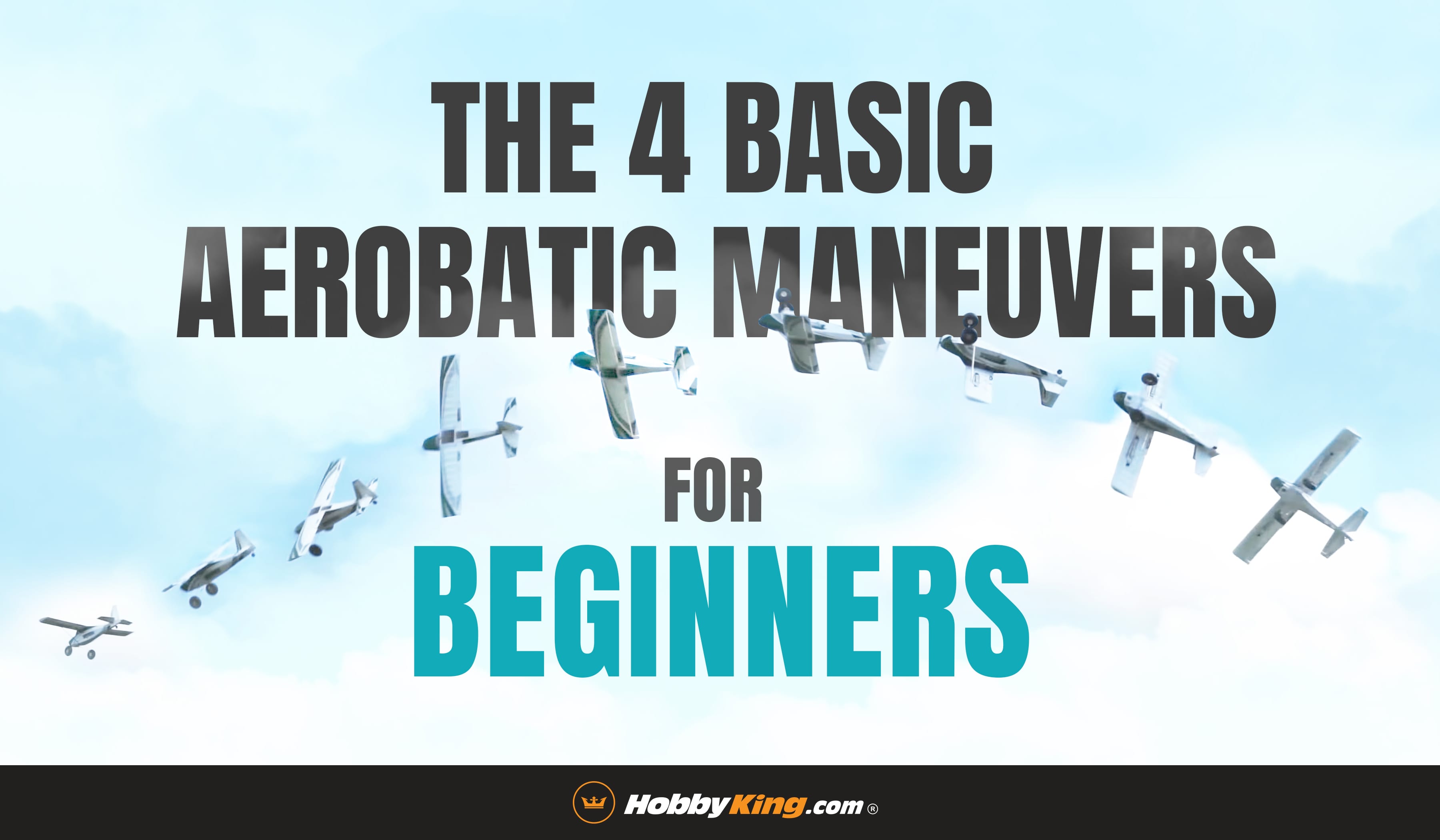
At some point in your RC piloting career, you will inevitably be seduced by the marvel of 3D aerobatics. All those jaw-dropping flips and tricks just look too intoxicating to let slide. However, where do you even begin?
While there seems to be an endless assortment of meticulously executed aerial stunts, the truth is: All these maneuvers are anchored and derived from FOUR basic moves. If you can master the mechanics of these aerobatic fundamentals, you will be able to pull off a plethora of the more advanced and complicated ones.
Today we have Michael Wargo – a Hobbyking team pilot and internationally renowned aerobatic pilot and airshow performer – to explain the fundamentals of aerobatic flying, and how to go about learning them.
---
The moment I started trying some basic aerobatic maneuvers, my interest in the hobby and my flying skills began to soar (pun intended).
Aerobatics does a few important things for you and your flying. First, it acclimates you to different orientations that would otherwise disorient you and put you in a precarious situation triggering the panic response - we all know that feeling. Next, it gives you something to work on with the reward of tangible improvements. This was what truly inspired me.
I would go to the field and I couldn’t do the maneuver. But a few days later with some focused practice, I was doing it with ease. It was a great feeling that motivated me to tackle more difficult and impressive stunts. For me, it was addictive and launched a real passion for the hobby.
Finally, it helps give you confidence. Confidence is a vital ingredient to improvement, and the more advanced maneuvers you master, the better you will handle every aspect of your flights. Being a competent aerobatic pilot can transform your flying by giving you more precise control and the confidence that will make most of your flights significantly more stress-free and reduce the risk for mistakes.
So, let’s get started with what I believe are the fundamentals of aerobatic maneuvers:
The loop
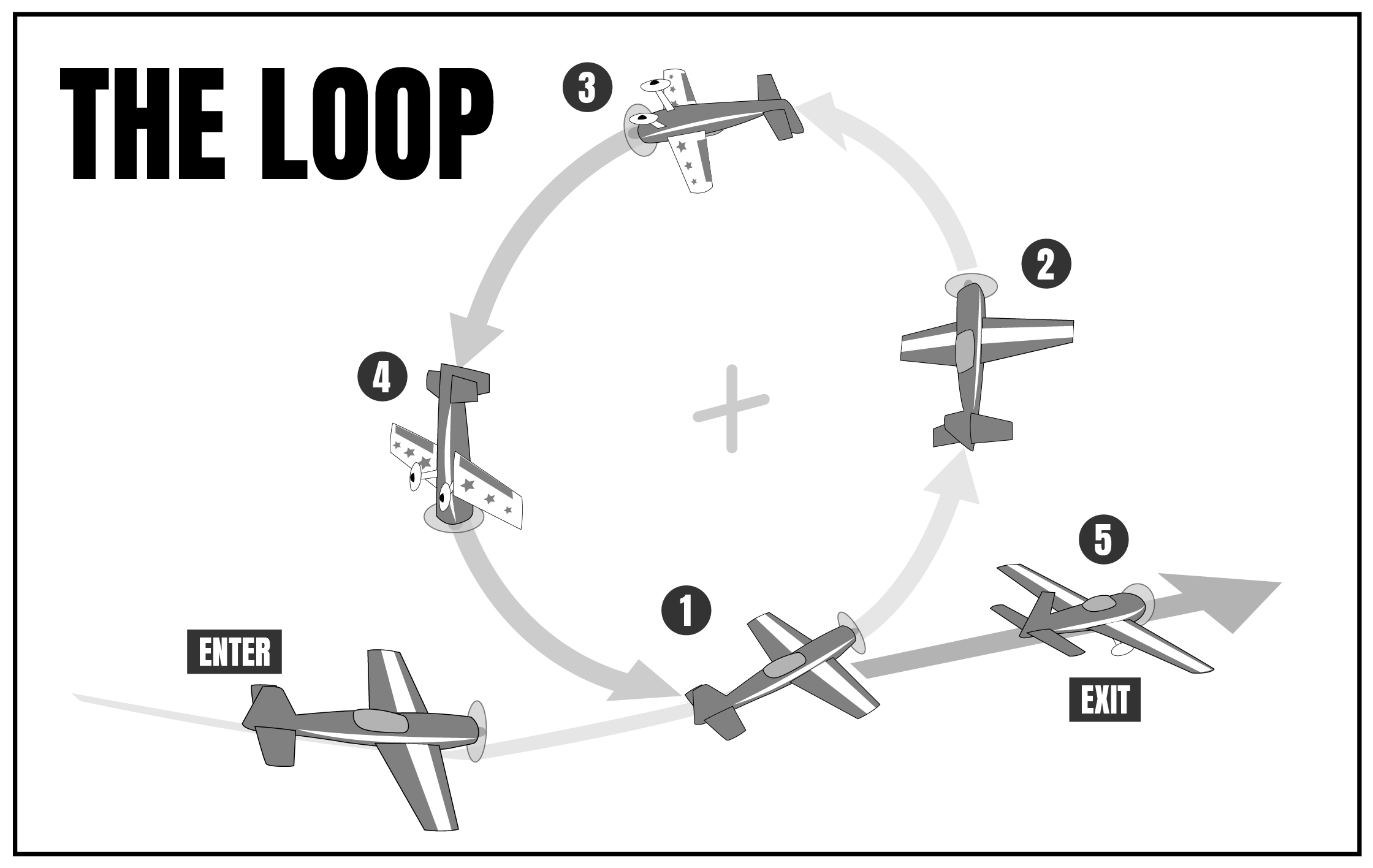
The loop is probably the most basic skill. But to do it properly (for maximum appeal), you are going to try to execute a geometrically perfect circle. In order to do it, you should start flying level and parallel to the runway. Simply apply power (because you are going vertical) and pull back the elevator slightly at first then add until you begin to create the beginning of the loop. Keep the throttle high enough to maintain airspeed while going up. Simply keep the elevator pulled adequately to keep the shape of the loop. Then, as you are approaching the top, you must reduce the throttle. If you don’t, it will fly very fast on the downward section and might get a bit scary. Remember: Elevator first, then at the top, just reduce throttle and keep the elevator. At the bottom, relax the elevator and add back enough throttle to fly normally.
Ultimately, even when you master it, you will be making slight adjustments to maintain the look of the loop, but these two simple steps will get you through it. The larger the loop, the better they tend to look.
The Roll

A roll simply requires moving the aileron stick right or left until the plane completes a 360-degree roll. However, for it to be regarded as an aerobatic maneuver, you need to execute it slowly and more deliberately. Rolling the aircraft in a controlled way is a gateway maneuver to a large number of other aerobatic moves.
You will find that high-wing, low-wing, and mid-wing planes all roll a bit differently. A mid-wing aerobatic plane will roll in a more axial manner. Of course, you can roll about anything; however, some just don’t quite look like a pure axial roll. High wing planes like a cub, or multi-engine warbirds, and scale planes will “barrel” quite a bit through the roll even if you only apply aileron. This maneuver is something that actually takes a bit of practice to do well, and a tremendous amount of practice if you ever want to do a very long slow roll while continuing to fly straight.
To execute the roll, simply position the plane parallel to the runway in either direction flying straight, then simply apply aileron and let the plane roll. Fast at first for safety, and up a bit higher for comfort. My suggestion is to go in the same direction at the same orientation every time for a while until you are comfortable. Then, to improve, try to roll slower with consistency to make it look good.
To improve the look, a more advanced technique is required. As we roll in one direction, we will add the opposite rudder through the first half of the roll. Then the opposite rudder on the second half. This will keep the nose from pointing to the ground when your RC plane is not supported by the wing and on its side. With consistent speed rolling right as the plane gets on knife-edge, you should be adding a bit of left rudder. Then, after it passes inverted, you should add the right rudder then release it when flying level again. This is an advanced technique, but you should definitely try it after you master the basic roll. As a matter of fact, I input rudder every time I roll any airplane. It always makes it look better and straighter.
Inverted Flight:
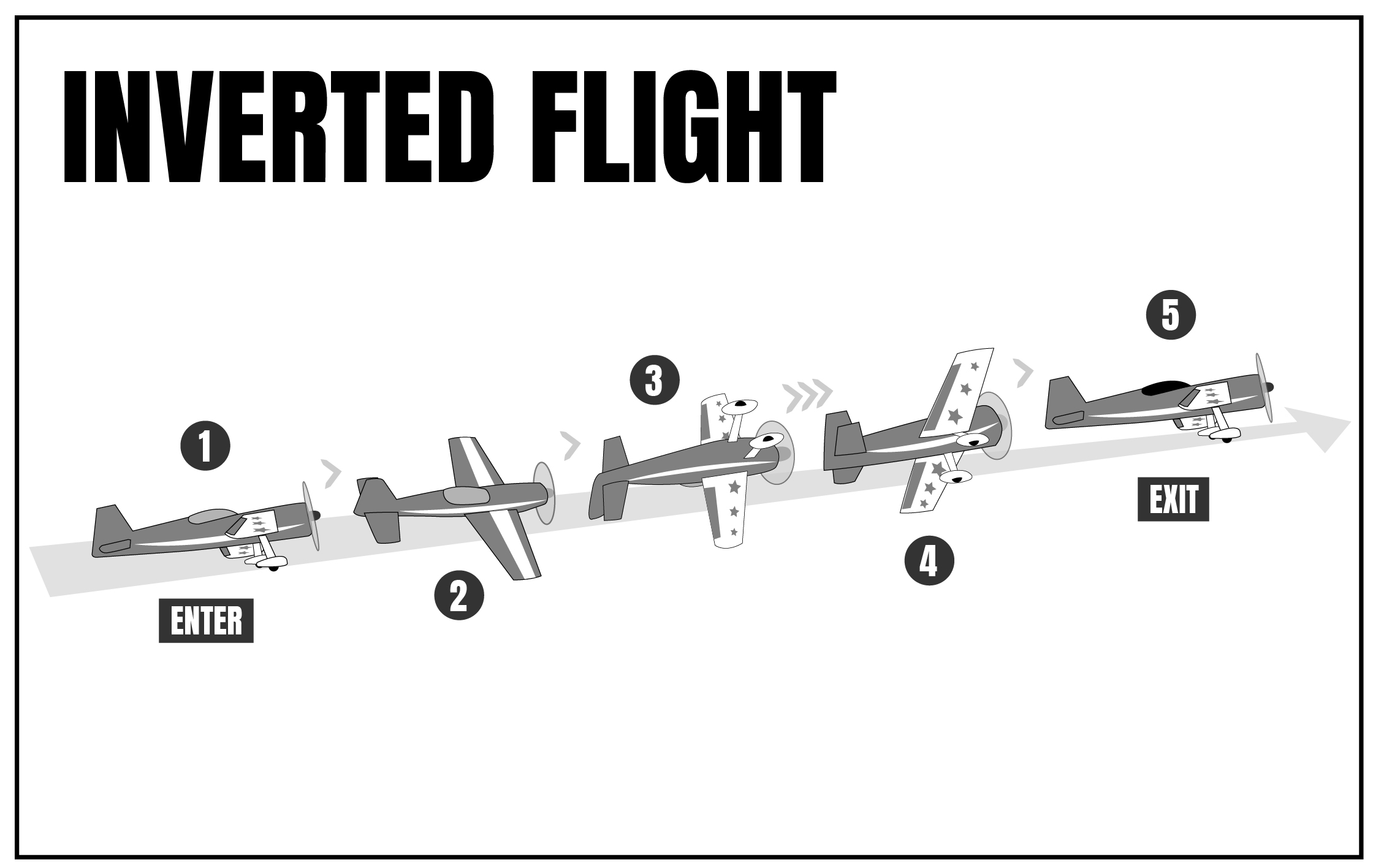
Learning to fly invertedly is not difficult, it just involves a bit of nerve to start. There are a couple of tricks to help make you comfortable. I suggest going up high giving you plenty of space and margin for a potential mistake or mishap. Remember, if the plane is high, you don’t need to correct a mistake fast.
After gaining some altitude, fly towards yourself in level flight. Start by simply rolling the airplane and when the wings begin to become inverted, add a bit of down elevator. Then release it and watch the response and don’t be quick to correct. Nothing will happen except it may climb or fall a bit depending on your C.O.G. (center of gravity) setting. Then, push forward on the elevator stick a bit if it is falling slightly until it levels off.
To gain confidence, always do the roll facing the same direction and orientation. You will get more comfortable much faster with consistent elements. Finally, as you get more comfortable, let it fall a bit lower for it to be more impressive, but never push your comfort level too much. To get lower, start high and get the nose down at a nice gentle angle, and simply fly lower adding elevator gradually to level off where you are comfortable. Eventually, you can fly it in different orientations and directions, and maybe someday fly inverted just above the deck impressing everyone watching!
Stall Turn or Hammerhead
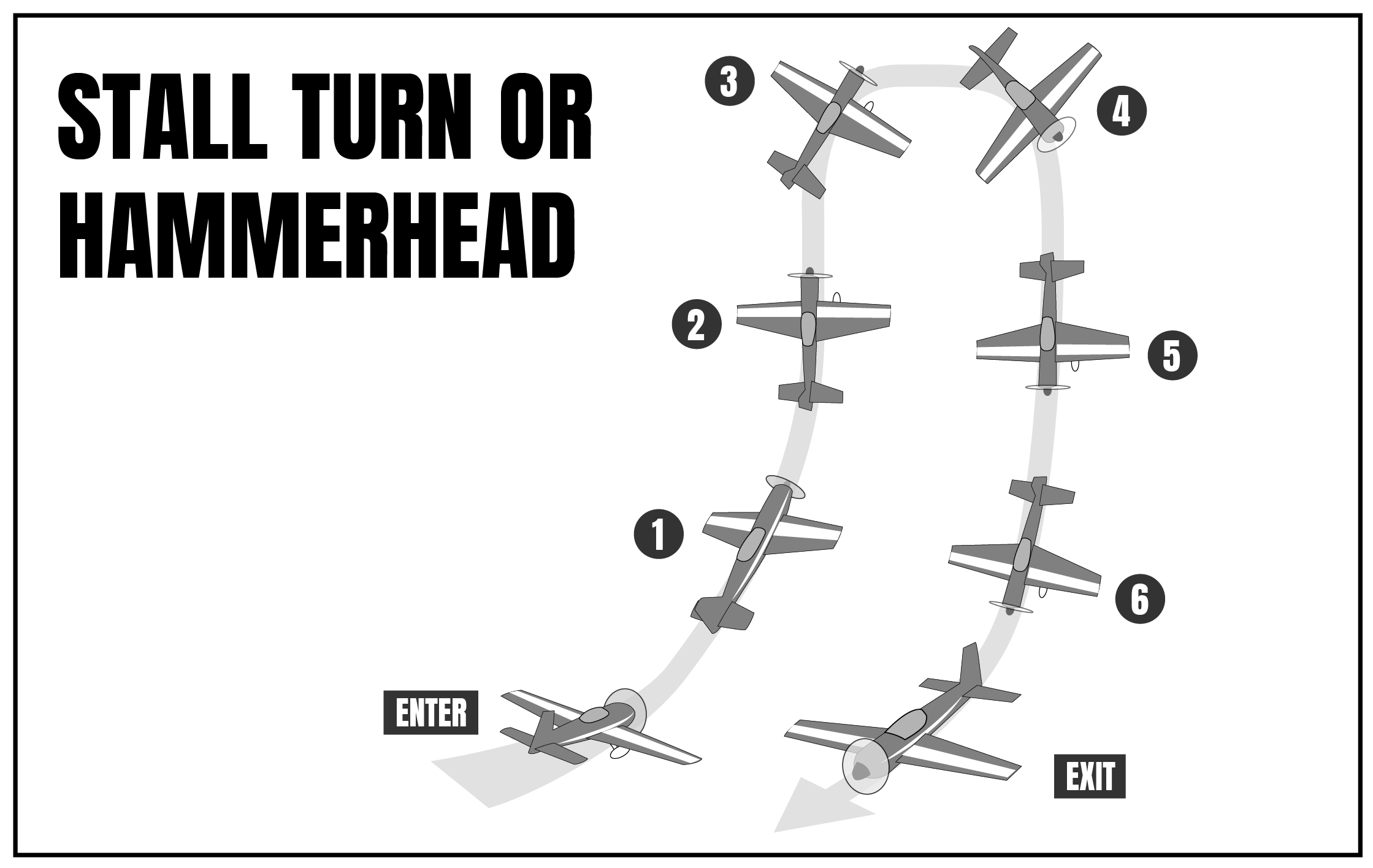
This is probably the most difficult of all the basic maneuvers. It is where the plane flies vertically until it stops or stalls. Since most modern RC models have the ability to fly vertically indefinitely, you will have to slow it to a stall. While flying vertical, right near the top, you must hit full right or left rudder. The plane should basically pinwheel to nose down.
At that point, you will use gravity to fly straight down the line. Again, always try high up for the first few times or until comfortable. You will need to add a bit of throttle to put some airflow over the rudder. Remember, if the plane isn’t moving, the flight surfaces have no effect. The prop wash, however, will provide the airflow necessary to turn the aircraft. The more throttle, the faster you will spin. With scale aircraft and non-aerobatic planes, it will tend to be more difficult and less axial. It is simply because the control authority of the rudder is significantly less than an aerobatic model.
About the Author: Michael Wargo
Michael is a seasoned RC hobbyist with over 12 years of flying experience under his belt. He specializes and is renowned for his authoritative command over 3D aerobatics and currently performs in airshows and is conducting clinics all over the U.S. He has been one of the world’s top aerobatic pilots for many years and flies everything from RC helicopters to Turbine jets. Michael is an advocate of the hobby and his passion and dedication to help beginners are truly remarkable.
Michael has published countless posts and media assets across all the major RC forums with a focus on helping beginner RC pilots, as well as hobbyists looking to fly 3D. He has several Wargo signature designed aircraft you can find on the Hobbyking site, and his YouTube channel is a gold mine for complete beginners, amateurs, and even advanced pilots trying to take their skills to the next level. If you want to contact Michael, he goes by the handle mtwargo on RC Groups and Michael Wargo on YouTube.
---
Hear it First: Join our Mailing List
Sign up to receive new product updates, exclusive discounts, news, and more!

